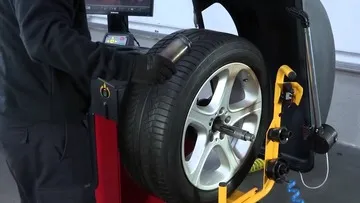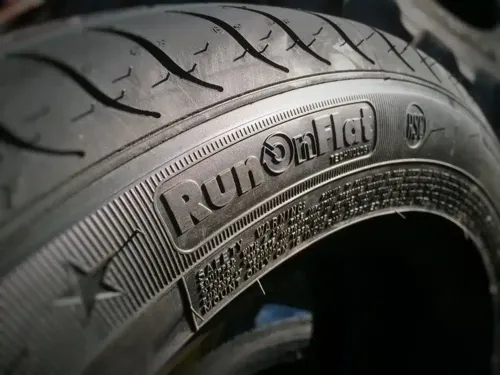Wheel balancing vs Wheel alignment
How both services improve your vehicle’s performance, safety, and tyre lifespan.
Posted on

Keeping your wheels in optimal condition is key to ensuring your vehicle runs smoothly and safely. Two essential services that help maintain your wheels are wheel balancing and wheel alignment. While both are crucial for your vehicle’s performance and tyre health, they serve different purposes. In this blog post, we’ll break down the differences between wheel balancing and wheel alignment, and why you need both to keep your vehicle in top shape.
What is Wheel Balancing?
Wheel balancing involves ensuring that the weight of the tyre and wheel assembly is evenly distributed around the axle. Even the slightest imbalance in weight can cause vibrations at higher speeds, uneven tyre wear, and discomfort while driving. This process is essential for providing a smooth ride and prolonging tyre life.
How Does Wheel Balancing Work?
During a wheel balancing service, the technician will:
- Remove the wheels and place them on a machine that measures the imbalance.
- Add small weights to the rim of the wheel to balance it out, ensuring even weight distribution across the wheel.
- Reinstall the wheels and perform a test to ensure the vibration is eliminated.
Signs You Need Wheel Balancing:
- Vibrations in the steering wheel, seat, or floorboard when driving at higher speeds.
- Uneven or premature tyre wear.
- A noticeable drop in fuel efficiency.
What is Wheel Alignment?
Wheel alignment (also known as tracking) involves adjusting the angles of the wheels so they are set to the manufacturer’s specifications. Proper alignment ensures that the tyres meet the road at the correct angle, providing even contact and better handling. Alignment affects the vehicle’s camber, toe, and caster — three key angles that control how the tyres touch the road.

How Does Wheel Alignment Work?
When performing a wheel alignment, a technician adjusts the following:
- Camber: The angle of the tyre when viewed from the front of the vehicle. If the top of the tyre tilts in or out, the camber is out of alignment.
- Toe: The angle of the tyres when viewed from above. If the tyres point inward or outward, they are misaligned in the toe position.
- Caster: The angle of the steering axis when viewed from the side of the vehicle. Incorrect caster can affect the vehicle’s steering stability.
Signs You Need Wheel Alignment:
- The vehicle pulls to one side when driving.
- Uneven or rapid tyre wear.
- The steering wheel is off-center when driving straight.
- The steering feels loose or unstable.
Wheel Balancing vs. Wheel Alignment: Key Differences
While both wheel balancing and wheel alignment are necessary for maintaining your vehicle’s performance, they are different services addressing distinct issues:
| Aspect | Wheel Balancing | Wheel Alignment |
|---|---|---|
| Purpose | To ensure even weight distribution around the wheel. | To adjust the angles of the wheels so they meet the road correctly. |
| Focus | Eliminates vibrations and ensures smooth driving. | Improves handling, tyre wear, and overall stability. |
| When Needed | When you feel vibrations or after replacing tyres. | When the vehicle pulls to one side, or after hitting a pothole or curb. |
| Service Process | Adding weights to balance the wheel. | Adjusting the camber, toe, and caster angles of the wheels. |
How Often Should You Get Wheel Balancing and Alignment?
- Wheel Balancing: It’s recommended to get your wheels balanced every 5,000 to 6,000 miles or when you notice any vibrations while driving. Balancing is also required after getting new tyres, rotating your tyres, or repairing a flat tyre.
- Wheel Alignment: Wheel alignment should be checked at least once a year, but you should get it done sooner if you notice any signs of misalignment, such as uneven tyre wear or your car pulling to one side. It’s also wise to get your alignment checked after hitting a pothole or curb, as these can knock your wheels out of alignment.
Can You Have One Without the Other?
While wheel balancing and alignment are separate services, they often go hand-in-hand. Imbalanced wheels can cause alignment issues, and misaligned wheels can lead to further imbalances in weight distribution. For optimal performance, it’s best to ensure that both your wheels are balanced and aligned.
Final Thoughts
Both wheel balancing and wheel alignment are crucial for maintaining the health of your tyres and the overall performance of your vehicle. While wheel balancing addresses uneven weight distribution that can cause vibrations, wheel alignment ensures that your tyres meet the road at the correct angles for optimal handling and safety.
By understanding the differences between the two and ensuring both services are performed regularly, you can extend the life of your tyres, improve your vehicle’s fuel efficiency, and enjoy a smoother, safer ride.










